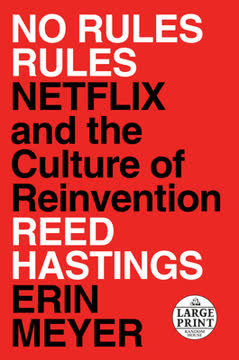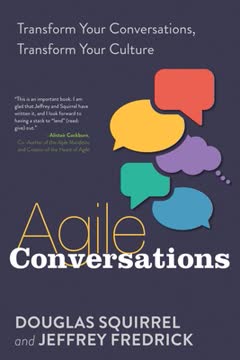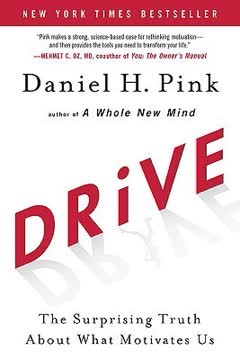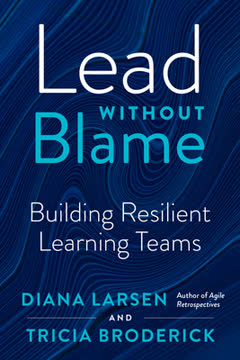Key Takeaways
1. Break Free from Blame to Foster Learning
Faultfinding is a popular sport. It gives the illusion of making things better, but it rarely leads to real improvement.
Blame cripples performance. In today's complex, uncertain, and ambiguous (VUCA) world, the traditional reliance on blame and shame to drive accountability is counterproductive. Blaming others or oneself stifles innovation, creativity, and the ability to perform well, leading to a destructive downward spiral of self-protection and inaction. This focus on faultfinding distracts from solving real issues and wastes valuable energy.
Shift from task to knowledge work. Many organizations operate on outdated fallacies from the industrial era, treating knowledge work like repeatable task work. This mismatch leads to increased blame when outcomes are unpredictable. Knowledge work, which involves constant learning and evolving outputs, demands a different leadership approach that prioritizes effectiveness (value) over mere efficiency (speed), and product delivery over project success.
Leaders must model learning. Breaking free from blame means shifting focus from "Why did you make this mistake?" to "What can we learn together now?" This requires leaders to courageously admit their own failures and transparently share their learning journeys. By doing so, they create an environment where mistakes are seen as opportunities for growth, fostering shared responsibility and enabling teams to thrive in uncertainty.
2. Embrace the Learning Leader's 4Cs for Growth
To show a commitment to learning, learning leaders embrace, model, and activate four elements: courage, compassion, confidence, and complexity.
The 4Cs define learning leadership. Learning leaders are those who actively cultivate an environment where everyone can learn and grow, moving beyond traditional command-and-control styles. They embody four critical elements:
- Courage: Standing up for learning, advocating for team learning time, and showing vulnerability.
- Compassion: Recognizing the difficulties of learning, understanding that new skills take time, and providing a safety net.
- Confidence: Believing in the team's ability to learn and meet challenges, fostering growth in professional skills and interactions.
- Complexity: Acting from a systemic viewpoint, looking for root problems, and understanding that more information emerges with learning.
Model desired behaviors. Leaders don't just talk about the 4Cs; they live them. For instance, a leader might adjust an activity to accommodate different engagement styles, showing compassion, or openly share their own learning interests, demonstrating courage and vulnerability. These actions create a psychologically safe space where team members feel secure enough to take risks, contribute, and challenge the status quo without fear of negative consequences.
Foster a thriving environment. By consistently embodying the 4Cs, learning leaders create a virtuous cycle. Their confidence in the team's ability to learn empowers team members to take responsibility and engage fully. This approach helps teams navigate challenges, embrace diverse perspectives, and ultimately achieve better solutions, as seen when a hesitant team member like John fully engaged after a leader demonstrated these qualities.
3. Cultivate Essential Motivators: Purpose, Autonomy, and Co-intelligence
Purpose and autonomy without co-intelligence creates subpar quality.
Three pillars of motivation. For high-performing teams, learning leaders focus on three essential motivators:
- Purpose: A motivating, meaningful "why" that aligns everyone towards a shared, impactful goal.
- Autonomy: The empowerment to make decisions about how, when, and with whom work is done.
- Co-intelligence: The integrated sum of all team members' skills, knowledge, and experiences, freely shared and built upon.
Purpose drives alignment. A clear, shared purpose is foundational. It must be big enough for all contributing parties to have a role, ensuring mutual success and fostering collaboration. When teams understand their impact on customers and the broader business strategy, they are more motivated and creative, leading to higher-value delivery and long-lasting business success. This moves beyond mere functional alignment to inspire meaningful impact.
Autonomy and co-intelligence empower. Autonomy requires a supportive environment with clear boundaries, not just a decree of "empowerment." It means expecting discoveries in knowledge work and demonstrating patience and confidence in the team's learning journey. Co-intelligence, the collective wisdom of the team, expands individual competence and mastery, enabling new wisdom and innovative thinking. Leaders prioritize continuous team learning to amplify this collective intelligence, recognizing that relying solely on individual expertise is no longer sufficient.
4. Accelerate Team Resilience with Blame-Free Retrospectives
Regardless of what we discover, we understand and truly believe that everyone did the best job they could, given what they knew at the time, their skills and abilities, the resources available, and the situation at hand.
Retrospectives as learning accelerators. The "retrospective prime directive" sets the tone for blame-free learning, shifting focus from individual fault to systemic understanding. Retrospectives are powerful events where teams collectively examine past experiences, share perspectives, analyze implications, and collaboratively choose improvement actions. They are not just for IT teams but can benefit executive teams, departments, projects, and unexpected events.
Framework for resilience. The Retrospective for Resilience Framework reinforces essential motivators and builds resilience through structured steps:
- Set the Stage: Align on topic, outcome, and shared purpose, encouraging participation.
- Gather Data: Build shared understanding of team experiences, increasing visibility.
- Generate Insights: Encourage all voices to examine deeper issues and explore new ideas.
- Decide What to Do: Converge on actionable steps, fostering autonomy and responsibility.
- Close the Retrospective: Reinforce commitment and gather feedback for the facilitator.
Facilitation is key. Effective retrospectives require skilled facilitation that remains neutral on the outcome, focusing on the process of collaboration. A good facilitator creates a psychologically safe setting, designs the flow of interactions, and helps the team move forward without taking sides. This approach builds shared responsibility, deepens co-intelligence, and accelerates the team's ability to learn and adapt, even in complex situations.
5. Build Collaborative Connections for Deep Trust
Every combination of people in a group contributes to the greater dynamic. For a group to be healthy, it should bond as a whole, but also nurture individual relationships within itself.
Trust is foundational. Resilient learning teams are built on strong, trustworthy connections. Trust is a two-way street, incorporating credibility, support, and consistency. Small, frequent collaborative activities, like the "Motivation, Trust, and Safety" exercise, provide opportunities to build and rebuild trust, especially after setbacks where trust may have been broken.
Manage team size and connections. The "law of decadigitality" highlights that communication difficulty increases exponentially with more team members. Learning leaders must be mindful of team size, as larger teams complicate communication, collaboration, and decision-making. They design interactions that allow every voice to be heard, using techniques like individual thinking time, small-group discussions, and queued participation to manage complexity.
Chartering for cohesion. Team chartering is a critical tool for establishing trust and connection from the outset. It clarifies the team's purpose, alignment, and context, including vision, mission, simple rules, and committed resources. This investment in a focused start accelerates performance, fosters shared responsibility, and builds the "team-i-ness" necessary for resilient collaboration, as seen when James's cross-functional teams used it to great success.
6. Transform Conflict into a Catalyst for Creativity
Conflict is not only inevitable but vital in the workplace.
Conflict as a sign of growth. Many people fear conflict, associating it with personal attacks. However, conflict is a natural outcome of diverse ideas and approaches towards a shared goal. When grounded in trust and commitment, healthy conflict unlocks creativity and innovation, allowing teams to build on each other's ideas and achieve greater improvements.
Navigate conflict levels. Conflict can escalate quickly, moving from healthy problem-solving to destructive ideological differences. Learning leaders must recognize these levels:
- Find a solution: Focus on shared goals.
- We disagree: Reinforce value of diverse perspectives.
- Passionate dispute: Acknowledge emotions, honor differences.
- Winners or losers: Elevate systemic view, reiterate shared goals.
- Ideological differences: Pause, reset, and de-escalate.
- This means war: Rarely reached in the workplace, but signifies complete breakdown.
Feedback as a gift. Engaging in conflict effectively requires strong feedback skills. Feedback, when delivered with care, respect, and good intention, is a gift that builds connections. Learning leaders teach frameworks for giving and receiving feedback, emphasizing specific behaviors, avoiding inflammatory language, and allowing space for reflection. This builds co-intelligence and confidence in handling disagreements, making teams stronger and more resilient.
7. Champion Inclusive Collaboration for Collective Wisdom
When organizations foster a setting of inclusive collaboration, it’s good for business.
Inclusion unlocks potential. Diversity and equity open doors, but inclusion ensures everyone can contribute fully and authentically. Inclusive collaboration means every team member feels welcomed, belongs, and that their unique perspective is valued. This leads to higher revenue, greater profitability, and increased creativity and innovation, as diverse perspectives unlock deeper insights into customer needs and problem-solving.
Understand intersectionality. People bring unique "intersectionalities"—combinations of social and political identities (e.g., race, gender, disability)—that shape their experiences of privilege and oppression. Learning leaders must invite and openly support these unique experiences, recognizing that they contribute invaluable insights and increase the team's co-intelligence and resilience to differences. Respecting privacy while fostering awareness is crucial.
Address microaggressions and bias. Microaggressions—subtle, often unintentional acts of discrimination—accumulate harm and erode trust, hindering collaboration. Leaders must become aware of conscious and unconscious biases that fuel these. The "Intent and Impact Framework" helps address microaggressions by acknowledging intent but prioritizing the harmful impact. Leaders also guide teams through "Mount Stupid," where overconfidence or imposter syndrome can stifle continuous learning, fostering "confident humility" instead.
8. Navigate and Mitigate Power Dynamics for True Engagement
Power makes a difference in who gets heard, which ideas are followed, and who belongs.
Power's pervasive influence. Power dynamics are inescapable in organizations, influencing every aspect of team resilience. They can be:
- Formal (Positional): Authority based on hierarchy, carrying the option to force action.
- Informal (Influential): Derived from connections or expertise, encouraging action through admiration.
- Dominant: Stemming from being part of the largest established group, potentially silencing underrepresented voices.
- Unidentified: Hidden agendas or unintended consequences that sway teams without a clear source.
Shift from "power over" to "power with." "Power over" dynamics, characterized by dominance and coercion, stifle contribution and lead to destructive conflict. Learning leaders must shift to "power with," using inclusion, collaboration, and support. This involves courageously embracing conflicts, showing vulnerability, and taking responsibility for the impact of one's power, as Su did by acknowledging her "2 percent truth" in team feedback.
Mitigate power imbalances. Leaders can mitigate power dynamics by:
- Increasing transparency with information radiators to visualize work and expose unequal distribution.
- Challenging formal authority figures to consider their influence and suggest mitigation actions.
- Fostering inclusive collaboration to ensure underrepresented voices are heard and dominant groups create space.
- Shining a spotlight on "elephants in the room" to address unidentified power sources through open discussion and learning.
By proactively addressing power dynamics, learning leaders ensure that engagement is authentic, conflicts remain healthy, and teams can truly collaborate to build lasting resilience.
Last updated:
Review Summary
Lead Without Blame receives high praise from readers, with an average rating of 4 out of 5 stars. Reviewers appreciate the book's practical advice on team dynamics, conflict resolution, and leadership strategies. Many found it insightful, offering valuable tools for creating healthy work environments and fostering innovation. Readers commend the authors' writing style and real-life examples. The book is recommended for both new and experienced leaders, with some considering it the best leadership book they read in 2023. Reviewers highlight its focus on continuous learning and resilience in teams.
Similar Books







Download PDF
Download EPUB
.epub digital book format is ideal for reading ebooks on phones, tablets, and e-readers.




